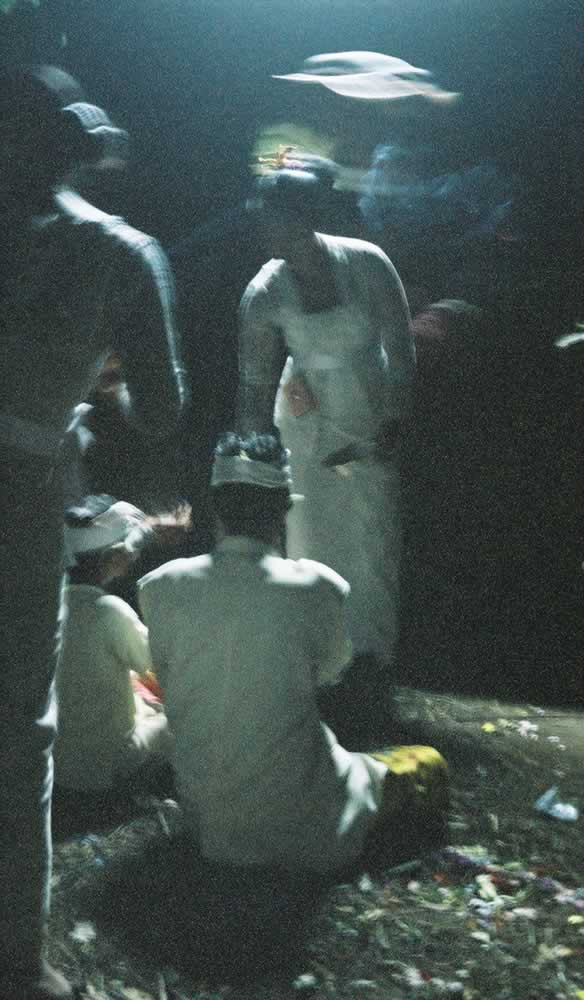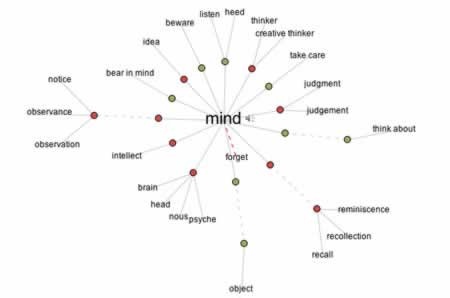
IN THE QUEST OF TRAVELING THE WORLD: EXPLORING SPELLS,
BINDING AND BRAND MAGIC
In an adventure of working around the world, one sees things differently in the layering and context of place. Different cultures approach brands in varying ways—to each, their own way of carrying fire—
their brands.
I’ve been around the global block for work: Asia, Europe, India, North and South America and the Middle East.
And what one can know, in this adventuring, is that there are different ways of thinking about new relationships in a community of experiencers and participants. What we do know is that there is a kind of magic in transforming the feelingness of brands, how people relate and engage with ventured business propositions.

THE ENTRANCE TO TRANCE
What about the concept of entrancement—how could that relate to a brand? “To throw in a trance” which is the linguistic rendering from 500 years ago—but then, as well—same time period, “to delight.”
Of course, the presumption, too, in signing solutions and wayfinding—it implies a point of “ingress.” It’s coming into some place, a sphere of influence, fluency in grasping an idea, or yes: an enterprise—entering in—which is entirely about entrancement—it’s your point of attraction to coming into—it. So, as you look around, are you drawn in further? Trance goes further into this presumption of a spellbound proposition, as in a transformative view: Latin transire “cross over, go over, pass over, hasten over, pass away,” from trans “across, beyond” (see trans-) + ire “to go” (from PIE root *ei– “to go”).
What’s that mean?
To go beyond. And to the nature of spellbound, you might offer that this is inherent to the supposition of this notion of entrancement—drawn in by the spell of the brand, you are bound to entrancement.
Committed, the experiencer has gone there, gone in. They’ve bought.
In all the work that we do on the brand development front, materially the work is about studying the culture of the demographies, knowing the system of the internal culture, imagery and messaging of the brand—rebooting components as necessary for improvement to captivation strategies and binding the audience to a commitment in the worth of brand experience.

Being in Bali, I’d heard about ceremonies of trance — the dream state of otherworldly reckoning. Being in Bali is a trance—just the experience of it, the place, the people—and surely, it is an en-trance to another world. Would that be entrancement—an entrance, a transitioning, a spellbound enchantment?
Journeying the path of a long dark tunnel, towards the presumption of light, I was trying to find the way out. Finding a doorway, it said “ENTRANCE” but it was the way out; and I pondered that allegory—
the way in, the way out.
A questioning being and the trance of entrancement—entry?
Could that be right—these words—aligned?
As aforementioned, trance is akin to transience — but the synchronism of the etymologies of entrance and movement — coming in, going beyond; they are speaking to the detailing transitioning transformation—and we know that both magic and branding are concerned with a transformative perception of where a person was, to a new plane of perceptive perspective about a brand.
It’s also worth the added etymological study—trance, from the Old French — transe, which is a “fear of coming evil,” and also originally defined as a “passage from life to death” (in the 12th century,) derived from transir “be numb with fear,” originally “die, pass on,” from L.transire “cross over” (see Douglas Harper’s scholarship: transient).
But there might be just that—fear, in the entrance of passing the portal from the one side to the other. Who knows what’s ahead? But as strategists, we can chart that journey, made as a string of transitional points of engagement and touchpoint gravitation—there are points of magnetism.
There is a draw: through.

Photo credit: @dacarc | Tim Girvin | Trongsa Dzong, Bhutan
Opening the door—any door, I always ponder that moment—from the one side to the other side. And as a brand developer, the work is about seeing doors, watching the door open, looking for the experience of the first stride-through. What’s beyond that door(way)? It is the way beyond to a new understanding, which, as well, is historically—a later iteration to “inner standing” which is to standing-in.
The brand’s journey is about the stride
beyond the known, to the new known. That would be “yonder.”
Yonder–the yond.
Wonderment—that would be another phrasing of the brand journey: “I see that—wonder about that: and in seeing more, to captivation and attraction—there could be wonder.”
That leads me on—to the E’s, as GIRVIN puts it experiencers come into brands: enchantment, embracement and engagement. It’s a cycling journey, there is first the chant—brandsong. What’s the melody?
If it’s “likable” there is embracement which leads to engagement,
which is commitment.
Mind and matter, made.

I was thinking about that question—someone asked me: “well, what’cha know?” And I contemplated the depth of the question. It’s just as powerful as “what’s your story?”
I thought about it: “really, what do I know?”
I know: now.
As a brand strategist and designer, you can only operate from the tools that you have in your current lexicon of presence—this moment, right now. You can predict, but in reality, it all comes down to the now—what you know in this instant that can build a meaningful direction.
In the Zen ritual stone that is resting in the GIRVIN offices—the patterning of the expression is a 4-part reading of a sequences of messages that are floating in each of the cardinal points around the concept of the open square—a linguistic radical— a marked definitive for the detailing of Sino-Japanese script.
This radical, this character—it’s a square box—is only part of each ideogram—it’s a definitive that defines each ideogram—the center square is the radical for each character.
In a kind of meditative Zen kōan, this stone shows the character to the left, above, to the right, and below as each having a relationship to the central square character.
At the Zen compound, Ryōan-ji, at one of the entry points, is the stone purification washing ritual—the tsukubai (蹲踞) in Japanese, used for purifying the celebrant’s hands before entering the sacred place.
The center of the face of the stone is scribed with the kanji for mouth, kuchi (口). and—added to the four kanji surrounding the basin—they become 吾、唯、足、知.

Ryōan-ji stone image (matching the GIRVIN entry stone) photographed by Matias Stella.
The mysterious Zen answer to the question could be translated as: “I know only what I know—now.” I know only what is known to me. I know only enough. I know what is only the known of my experience — in the right now. I know nothing more. Or less, than that. Even the design of this Zen garden stone is a puzzlement. It is a visual koan or Zen puzzle question, whose answer—to the Zen master—holds the clue to the level of awareness of the student in the Zendo.
What’cha know?
This relates to GIRVIN’s earlier reconnoitering about the Zen puzzle of Mu, the ideogram and the kōan of Mu, which we’ve drawn in another story.
What I might offer, to the brand wayfinder, is the nature of finding the heart and soul of brand enterprise is in the nature of the human condition. What is known is really about what is enthralling or enchanting — what draws one into being engaged in the nature of the mystery and wonder of what’s happening with a brand’s offering—how do you sell it?
What is knowing could be the brand’s catalyst to what is exciting enough to be recalled, shared, understood and celebrated.
Talking to people about the human enterprise of the brand condition is oftentimes framed in what is the most meaning-full. And relevant. “I love this story — it’s so cool” translates to more in the parlance of connection. The propositions of sociability and sharing are all about compelling content that is personally relevant and “shareable.”
Love: product?
I love this shop
I love this drink
I love this place
I love this hotel.
Love is about knowing. And sharing. “I get this.”
Explore, to knowledge and knowing lies in the deep dive of language and context.
What’s on your mind?
I’ve pondered the link of mind to the meaning of—literally: mean (and meaning). Seeing this sign brought them together, in a way—minding your head. Minding meaning—and the link twixt the two. That idea of mind, meaning, the mental are all intertwined in the etymology of knowing.
What can be “known,” is one element in the layering of being. There’s a question—do you know, or do you “be” in the character of knowledge and understanding.
Thinking about the tenets of the practice of the work of design strategy, innovation, branding and the commonality of community and communication, it does come to this — what is known, what is being in the sense of knowing, and what is the layered framing of understanding?
I go back—to go forward, exploring the intricate layering of words and ideals. An old word, from the linguistic lineage of use, to my thinking, oftentimes, holds secrets from its
etymon, a Greek word for “true meaning.”

Meaning is minding, from the Old English—mænan “to mean, tell, say, complain,” from Western Germanic. *mainijanan (cf. Old Frisian mena, the Dutch—menen, German—meinen to think, suppose, be of the opinion”), from the ancient seed sounds of the Proto Indo European—*meino– “opinion, intent” (cf. Old Church Slavonic meniti “to think, have an opinion,” Old Irish—mian “wish, desire,” Welsh mwyn “enjoyment”), probably from the base *men–“think.”
Go mental.
If I inquire about knowing—to know—reaches back, thousands of years—Proto Indo European base of *gno–“to know” (gnostication) (cf. Old Persian xšnasatiy “he shall know;” Old Church Slavonic — znati, Russian—znat “to know;” Latin gnoscere; Greek: *gno-, as in gignoskein; and the crossing parallel of the Sanskrit: jna–“know.”)
You might wonder, “what’s the deal with all of these word histories?” The point to that string is the line, the red thread back to the heart of the word—how that string of meanings finds its way to us, going back—now going forward.
And in branding, what you mean, or what do you mean, and what is the meaning are all critical inquiries to propositions of value, brand stance, content and communications.
You can’t market if you don’t know:
WHY?
Knowing and mind—and the implications of memory, the gathering of instincts, comprehensions and “holding” the thought and idea expands that notion—but studying—going back to the mists of etymological time. The Proto Indo European base of *men–“think, remember, have one’s mind aroused” jumps to the Sanskrit: matih “thought,” munih “sage, seer;” the Greek memona “I yearn,” mania “madness,” mantis “one who divines, prophet, seer;” the Latin foundation of mens “mind, understanding, reason,” memini “I remember,” mentio “remembrance;” Lithuanian — mintis “thought, idea,” Old Church Slavonic: mineti “to believe, think,” and the bridge to the Russian — pamjat “memory”).
That idea of understanding is about standing before a sense of knowing—that standing is less to “standing under—and more to standing “between.” That idea reflects the seeing “across to something,” and sharing that ideal—to be able to speak of it: under + standan “to stand”. If this is the meaning, the under is not the usual word meaning “beneath,” but from Old English under, but from the distant seed sounds of the Proto Indo European *nter- “between, among” (cf. Sanskrit antar “among, between,” Latin inter “between, among,” Verstehen—the German word of today’s parlance goes back—“stand before” as well as the Old English—forestanding.
Presenting in a brand innovation summit, to a group of executives in Appleton [KC]—we were framing the use of words in building out a messaging. And the intimations and delicacies of the thinking of “how to communicate” powerful ideas in a manner that the presentation actually “makes sense.” Literally, that an audience can feel—sentire, the Latin for feeling; they can sense, hold and embrace the idea.
Working internationally, this becomes all the more impactful.
Get it?
During the “now” of messaging, the crossover of community and messaging becomes profound. There is the opening superficiality of understanding [“sure, I get it…”]—the standing before the idea—and there is the deeper sentiment of how deeply that idea is embraced.
One way or another, the current work must go back to a more soulful detailing of intention, the way in which people grasp and are held in the ideal. How they can be.

Enchantment is the song—the chant that invites a reach to people, brand experiencers.
Embracement is the magnetic connectivity that brings experiencers closer, after the enchantment of beckoning content that supports captivation.
Engagement is the tier where that commitment, in the line of sequence, becomes concretized.
I go back. I go forward. And I look for the threading in-between. I’d offer this sentiment in closure—think about the character of the soul of the brand, the heart of human enterprise in the storytelling enchantment and arousal of the brand connection to mind and memory. The link of mind, head, heart—they cohere in the soul of experience and recollection—it is there that people either get and hold that promise in the telling of new stories, or they spread another word of disconnection. They embrace.
Or they falter and fade away in disunion.
Stories spread like weeds, one way or another.
Either they are channeled and contemplated, or like wildfire, they burn as they well.
To craft strategy and to build concomitant tactics requires an edge, a tool, a “wand” if you would that translates meaning and construct from one plane of comprehension to a completely new relevance—it’s a transformative visioning.
That trance, that transitioning is a spell—well bound to the customers of the future.
Tim | OSEANSTUDIOS
….
THE BRAND STORIES OF GIRVIN
LEGACIES OF EXPERIENCE DESIGN AND MEMORY
THE STRATEGY OF INTEGRATION
Girvin Brand Luxe | http://bit.ly/gTW5HZ